The 2018 season marks 20 years since McLaren last won a constructors’ championship and ten since the last McLaren drivers’ champion. Five years have passed since they last won a race.
Under Ron Dennis the team was famed for two things: Fastidious attention to detail and, at their peak, unprecedented success.
But as the team’s new management struggles to make progress following a costly divorce from Honda, @DieterRencken argues McLaren needs to regain its focus on F1.
No matter how you slice it, McLaren has fallen, and mightily so. Once the standard by which all Formula 1 teams – including Ferrari – were judged, the Surrey-based team has yet to win a constructors’ championship this millennium.Most agonisingly for the team, McLaren last tasted grand prix victory five years and over 100 races ago. Adding insult to injury, consider that during the first season of hybrid engines, fellow Mercedes customers Williams took six podiums and placed third in the classification to McLaren’s fifth. Force India, also with Mercedes, scored a podium and placed sixth on a budget half the size.
At the time McLaren suggested it may not have received engine parity, but doubters questioned why the three-pointed star would run various engine specifications when it had its hands full getting to grips with F1’s new-fangled hybrid power units. As subsequent seasons unravelled, so McLaren grew increasingly adroit at pointing fingers in every direction except, saliently, internally.
Its 2015 switch to Honda, restoring the team to works status, seemingly could not come soon enough.
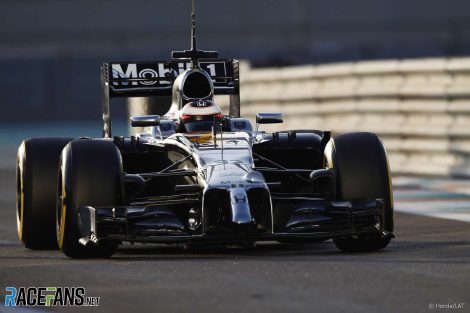
Last year, after McLaren’s board had forced out Ron Dennis – who had led McLaren to record-setting heights during the eighties before his record was tarnished by the Gates ‘Spy’ (2007) and ‘Lie’ (2009) – McLaren executives persuaded majority owners Sheik Mohammed of Bahrain and Saudi entrepreneur Mansour Ojjeh to dump Honda power in favour of Renault engines.
The pay-off? “A return to regular podiums,” promised new executive director Zak Brown, whose extramural activities include the chairmanship of a motorsport media group and a private sports racing team. The decision, though, cost McLaren dearly: Not only did Honda supply free engines, but contributed significantly to McLaren’s budget, and covered Fernando Alonso’s stipend.
The switch meant leasing customer Renault engines at the going rate, namely £18m plus a re-engineering programme; Honda also demanded a severance package, said to be £20m annually through to end-2020. Add in the loss of Honda’s commercial package (estimated at £60m per season) and Alonso’s earnings (£30m), and the financial swing borders on half a billion dollars over three years.
This reckons without the debilitating loss of sponsors and reduction in McLaren’s F1’s revenues since 2014 – potentially worth another quarter of a billion dollars – which Honda allegedly indemnified McLaren against while the contract was in force. These are, of course, worst-case numbers. But the depth of the dilemma is vividly illustrated by the MCL33’s bare flanks and pre-bonus annual F1 income which is at least £25m shy of McLaren’s natural grid peer, Red Bull.
However overlooked was that, in order to achieve the promised “return to podiums”, McLaren would need to beat four of the top six cars: some permutation of Mercedes, Ferraris and Red Bulls. Given that three teams have each won two of the six races so far – the last-named, significantly, with Renault power – while McLaren has failed to even get a whiff of a podium in six races, shows the team has fallen well short.
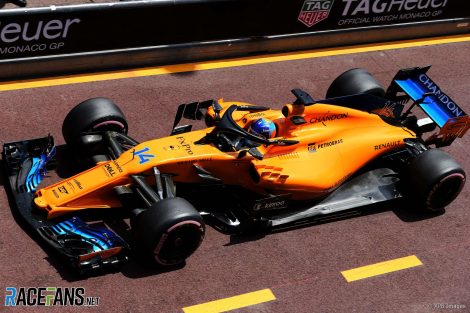
“Our top speed is not the best one because we are bottom in the ranking,” racing director Eric Boullier, the man ultimately charged with the team’s performance, admitted in Shanghai. “But it’s not the only [issue], it’s not as simple as this. Were it just a question of drag, it would be easy to fix. We have to address fundamentally all aspects of the car to make sure we know we are where we should be.
“We have the same engine as Renault and Red Bull and we are behind. There is no hiding, nothing else than [that] fact,” he added.
In Monaco last year, for example, McLaren’s best lap time was 1.48% slower than the best of the weekend; this year it was 1.84% slower. By contrast, Red Bull’s 2017 deficit was 0.44%, whereas this year the team was fastest in every session and walked the race. To compound comparisons, a Red Bull one-two was on the cards had Max Verstappen not crashed during Saturday practice.
Advert | Become a RaceFans supporter and
Crucially, the swap to Renault power exposes McLaren to direct comparisons with Red Bull Racing, whose chassis is reckoned to be the class of the grid, powered by the same power units, and here the true extent of McLaren’s shortcomings become clear.
Asked pre-season whether he was concerned about going head-to-head against Red Bull, Brown was upbeat. “We only want to hide if we’re nine-tenths (of a second per lap) off Red Bull,” he said, adding, “We’re a racing team, the second-most successful in terms of race wins, and we welcome competition.”
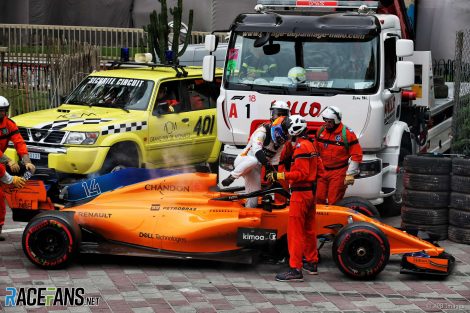
Asked by RaceFans how he felt about the lap time shortfall, Alonso said, “Disappointed in a way because we have the same power unit, and we should be at that level. But at the same time we knew from very early in the year that we are not yet at that level – but we will try to be as soon as possible.”
In the race the Spaniard retired with gearbox troubles, as had team-mate Stoffel Vandoorne a fortnight previously in Spain. Obviously McLaren’s woes are not restricted purely to chassis performance.
Indeed, by other metrics McLaren has regressed. Meanwhile Toro Rosso, which swapped Renault for Honda, advanced – scoring a magnificent fourth in Bahrain. True, after the split, the Japanese company had put in major efforts to regain credibility – having been particularly stung by Alonso’s constant criticism – but comparisons make for much discomfort.
During pre-season testing STR posted the third-highest number of laps, while McLaren appeared with increasingly larger holes butchered into its bodywork after cooling proved inadequate. Clearly the team’s cooling-to-drag calculations were out of kilter, which robbed the team of development time.
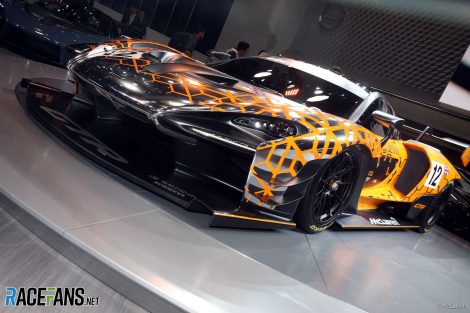
The matrix structure, copied from the aerospace industry, was introduced shortly after McLaren won its last constructors’ title. The intention was to ensure that the loss of a key person would not impact on the overall team. Responsibility for key activities is shared, goes the theory – which, though, means no individuals carry the can when things go wrong. McLaren’s downward spiral was aided and abetted by this no-blame culture.
Although Brown and Boullier are currently busy with restructuring the team, changing a company culture created over a period of two decades has proven to be the biggest challenge, and could take up to five years to dismantle, and not without much bloodletting. By then McLaren’s shareholders could well have burnt through a billion bucks, if not lost their patience.
In short, McLaren has evidently forgotten how to win, and many wonder whether it still has the fervent desire to throw its heart and soul into reaching the top step of the podium – let alone to win championships – that was once its hallmark. Yet, while the team burns, management fiddles about with talk of Indianapolis and Le Mans, pointing to McLaren’s pedigree in such series.
However, they conveniently overlook the historic impact of such diversionary forays into other activities on McLaren’s F1 record. In fact, a compelling case could be made that the root cause of McLaren’s current malaise lies not in its choice of engine suppliers past or presence, but in a gradual shift of executive focus away from the company’s core activity, namely grand prix racing.
To illustrate just how much McLaren has changed in a decade, consider a presentation by Dennis to a motorsport business forum at the start of the 2008 season, McLaren’s last championship year. In typical ‘Ronspeak” he defined F1:
“A Formula 1 car exists to win grands prix. To cover 305 kilometres, or 190 miles, in as short a time as possible. It’s the expression of the harnessing of the unstinting efforts of upwards of 1,000 utterly focused experts – efforts that are then distilled into 18 motor races driven by two equally focused, equally expert, individuals. It’s a macroscopic effort with a microscopic result, rapidly developed. It’s big-picture thinking, and attention to detail.”
Advert | Become a RaceFans supporter and
McLaren’s multitasking problem
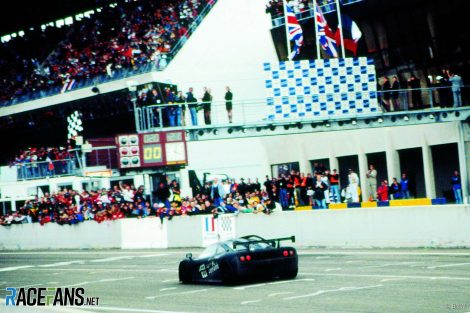
Thereafter McLaren diversified into Indianapolis, winning the hallowed 500 in 1974/6. Although James Hunt took the 1976 title, Niki Lauda’s fiery Nürburgring crash undoubtedly swung matters his way. Thereafter, as McLaren embraced the 500, so F1 results suffered, so much so that Marlboro massaged a merger of McLaren with Ron Dennis’s Project 4 operation.
Numerous further examples of lost focus abound in McLaren’s history: During the early nineties McLaren’s attention turned to its sublime F1 road car, which went into limited production for three years from 1993, also winning Le Mans in 1995. The company simultaneously dabbled with an ultimately aborted land speed record project. Between 1994 and 1996 McLaren failed to win a grand prix, scoring but six third places.
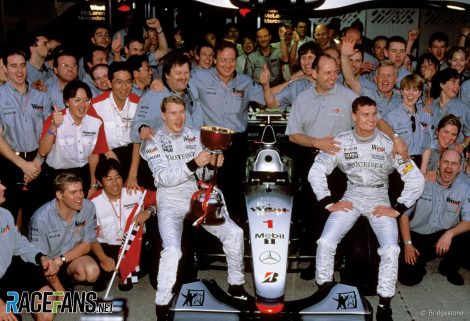
In 2010 McLaren announced plans for a return to sports car manufacturing, with the MP4-12C launched as a low-volume Ferrari/Porsche challenger in late 2011. McLaren won its last grand prix the following season.
McLaren, for all its strengths, is obviously unable to multi-task. Can the company build title-winning F1 cars? Emphatically. Le Mans winners? Of course. CanAm and Indianapolis winners? No doubt. Produce road cars able to consistently challenge Ferrari and Porsche? Absolutely.
Can McLaren, though, multi-task? Obviously not, as the team’s history relates. The lesson is clear: until McLaren once again focuses on F1 it is unlikely to return to its previous winning ways…
Follow Dieter on Twitter: @RacingLines
Go ad-free for just £1 per month
>> Find out more and sign up
RacingLines
- The year of sprints, ‘the show’ – and rising stock: A political review of the 2021 F1 season
- The problems of perception the FIA must address after the Abu Dhabi row
- Why the budget cap could be F1’s next battleground between Mercedes and Red Bull
- Todt defied expectations as president – now he plans to “disappear” from FIA
- Sir Frank Williams: A personal appreciation of a true racer




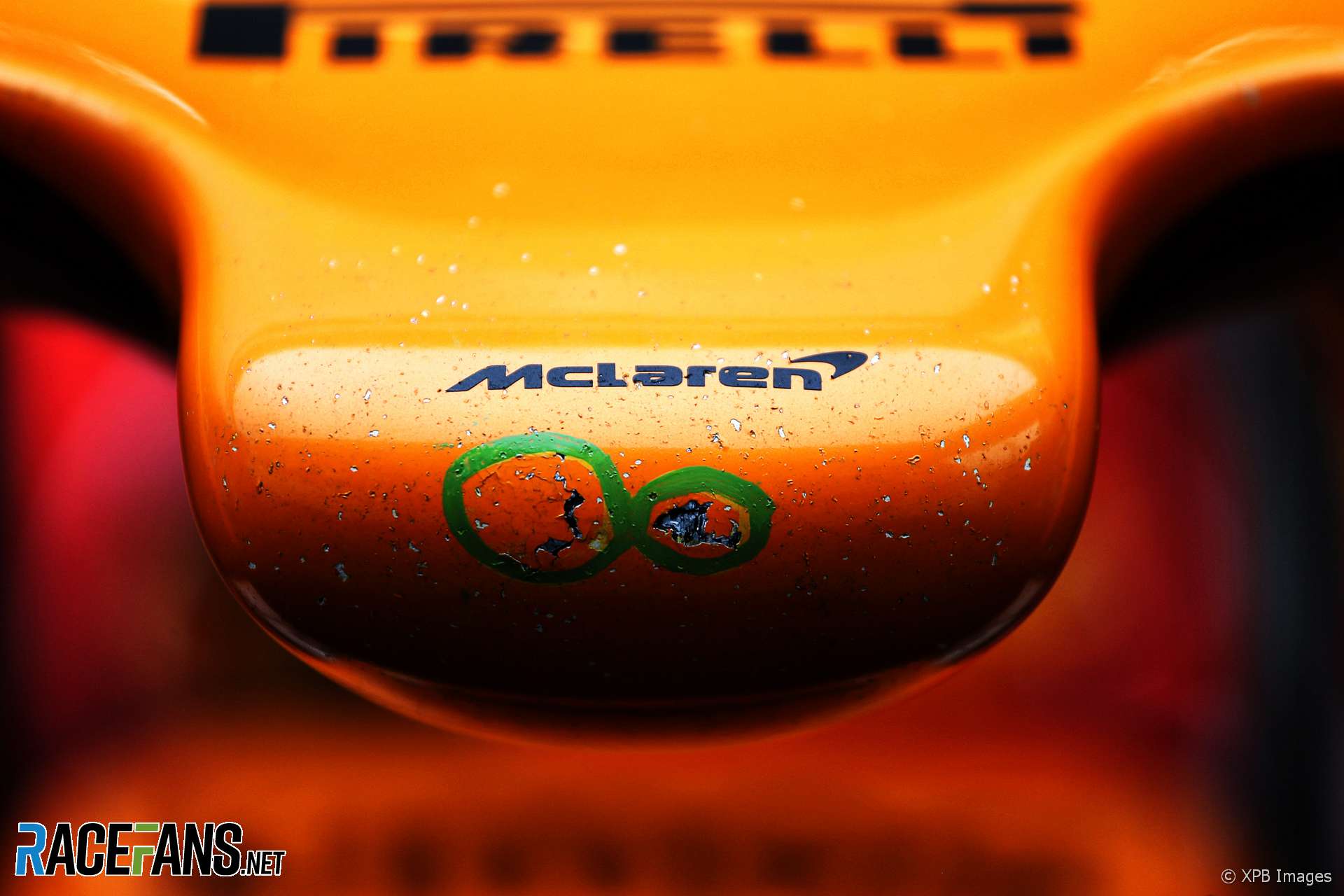
FlatSix (@)
6th June 2018, 12:41
Bwoah, ok. When was the last time they had two good drivers AND a good car, 2007 which they won, 2012 should’ve been theirs perhaps?
Mmh, not good. When was the last time they had one good driver AND a good car, again 2012 I’d say. But reliability failed Lewis.
Yeah,… Honda is to blame for a big part, but also McLaren, and I feel we could go another 5 years before we’ll see them win again, unless 2021 is very kind to them.
Definitely a team in decline. They’re following the Williams path.
tonyyeb (@tonyyeb)
6th June 2018, 13:22
@flatsix That’s the point though. It is down to McLaren to have the good car and the good drivers. They don’t get given them, they are responsible for the car and driver selection. McLaren have no one else to blame but themselves for the majority of their own downfall.
MazdaChris (@mazdachris)
6th June 2018, 14:21
@tonyyeb Absolutely – could you imagine Hamilton or Vettel or Ricciardo signing up to drive for Force India? The best drivers want to be where they have the best chance of winning. Clearly, right now, no top driver who has a choice would bank on success with McLaren. That’s sad because at one point F1 drivers would be falling over themselves to drive for them.
I was one of the people who seriously questioned Hamilton’s decision to leave McLaren and join Mercedes, but boy have I ever been proven wrong. That prescient judgement from Hamilton has turned out to be an absolute masterstroke.
tonyyeb (@tonyyeb)
6th June 2018, 14:26
@mazdachris Me too, I think I even got COTD by pointing out that in Hamilton’s McLaren career, he’d only gone in to the last race of the season twice (maybe once?! 2009?!) I think with no chance of winning the title. Who would move from a team that got him so close that many times?! But I was wrong.
Mashiat (@mashiat)
6th June 2018, 18:41
@tonyyeb He went into the last race of the season with a shot three times, in 2007, 2008 and 2010 (albeit very unrealistic as he was 24 points back and 4th). And he was not in with a shot in 2009, 2011 and 2012. So that’s only a 50% success rate, so perhaps not quite as impressive as you thought.
David Not Coulthard (@davidnotcoulthard)
6th June 2018, 16:10
@mazdachris
Alonso.
Phylyp (@phylyp)
6th June 2018, 16:47
@davidnotcoulthard – I think the operative bit is “who has a choice”, since Mercedes and Ferrari have already shut the door on him, and Red Bull have their own in-house meat grinder. Alonso’s unenviable choices are McLaren, Renault, or quit F1.
ColinChapman (@colinchapman)
7th June 2018, 15:19
Also Alonso banked on them much earlier when the situation was different. At that time I don’t think any of us were expecting them to be that bad. Now he’s there he may as well stick it out. But if he were with a different team now I don’t think he’d consider moving there for even a second.
jamesluke2488
7th June 2018, 0:26
See I don’t think McLaren are anything like Williams, McLaren have the money to suceed but Williams dont, the reason why McLaren are struggling is due to bad management not money, there road car division will mean the F1 team will never be short of money, Williams on the other hand don’t have a consistent source of money so when performance drops then sponsorship falls and with less sponsorship means less investment in engineering and development
paupovic
7th June 2018, 18:23
McLaren has NO money for F1 anymore.Just as McLaren DOES NOT have the best chassis as claimed.
Those two facts are the 2 sides of the same coin:”Mclaren does not have MONEY for F1 and NO best chassis in F1″.
Al hype,bluff and blunt lies.
The same goes for the “200 million pound”ghost investment.No money.
Not bankrupt(YET) but no money for F1.
Good luck and good racing to you all.
JC
6th June 2018, 12:47
If I were mclaren, I’d be questioning what value F1 brings to the business, especially now they are a successful road car manufacturer.
LeMans will sell more road cars. Indy will be a cheaper single seater series to sell the brand to the US. What else do they need?
Companies like Ferrari and Mercedes use F1 as a marketing machine for their road car business. But they build the PUs too.
Mclaren need to choose – go “all in” when the regulations change arrives in 2021, and become a PU and chassis racing team, or use other racing series to market their road cars and simply refer to their F1 heritage in “the golden years” of F1.
Gabriel (@rethla)
6th June 2018, 13:21
F1 is the business, what value does the road car manufacturing bring?
Jeffrey (@jeffreyj)
6th June 2018, 15:19
The core business of McLaren is to make money for its Arab owners @rethla. F1 bleeds money and selling cars makes them money….
The name ‘McLaren’ stands for ‘fast’, ‘winning’, ‘heritage’ and ‘prototype/unique tech’ in the mind’s eye of the consumer. Those values help to build the ‘McLaren’ name into a strong brand and that helps the corporate bottom line: make money for its shareholders.
Their poor performance in F1 is now really starting hurting this brand image. Venturing out into other series and being successful in them at a far lower cost, is a smart decision from a corporate point of view. Considering how much money it would take to get back to the top step in F1, success in other series might very well lead to McLaren leaving F1 permanently altogether within a few years. It would be a shame for F1 in general and McLaren F1 fans in particular, for sure. It also underlines why F1 needs to drastically limit team spending and make it affordable for teams to compete.
Ed
6th June 2018, 20:40
I’m sure they could manage both and at a lower cost(Force India Plus), if they had competent management instead of a finger pointing ad man, and an excuse making technical director.
matt
7th June 2018, 14:37
Have to agree, it’s not a money problem, they have plenty of arab oil money.
It is a toxic, stifling, oppressive corporate structure and atmosphere that is strangling all of the creativity out of that team.
There are also fairly large number of people there who are dead weight, lifers, holding out for a pension. They need to remove the excess, dead weight from the work force, bring in some fresh new designers, ditch the ridiculous corporate bureaucracy and be a racing team again instead of a corporation.
Joao (@johnmilk)
6th June 2018, 13:13
They have become really good at selling hats too
Ed
6th June 2018, 20:41
Lol nice !!
dio
7th June 2018, 7:07
I havent read one serious comment from you when it comes to Mclaren. Can you think one?
Joao (@johnmilk)
7th June 2018, 9:04
is this for me or Ed?
If it is for me have you read one serious comment from me when it comes to any other team?
But in sarcasm there is also a bit of truth, just have to dig a little bit deeper than usual
Gary
6th June 2018, 13:25
If I ran McLaren I would convince the SCCA to relaunch the CanAm series.
Jimmi Cynic (@jimmi-cynic)
6th June 2018, 19:47
As an imaginary McLaren board member, I’m voting for you.
F1 fan in Atlanta
6th June 2018, 20:44
They did that, it was called Ultimate Racing Series. They built 2 cars, one that ran and then NOTHING. It is a great idea in theory but expensive and no one with the money wants to buy a non-historic historic car it seems. 2011 with the ALMS and dud, no events scheduled. 2015 with SCCA and WC, not even a peep.
http://www.unlimitedracingchampionship.com/the-cars
https://www.motorsport.com/roadracing/news/can-am-spec-car-revival-will-it-work-in-2015/
Gabriel (@rethla)
6th June 2018, 13:29
I doubt Mclarens multitasking is the problem. With so many shifts in leadership, structure and focus you really cant compare their situation in the 70s to their situation now.
They are just to proud. “We have the best drivers we have the best car” is all you ever hear from them when its clearly not the case. People sitting on their posts for 20years just thinking they are the best aint a way to stay competetive, Ron was left on his imaginary cloud of “attention to detail” far to long.
sumedh
6th June 2018, 13:32
Great insights Deiter!
Didn’t know Honda indemnified Mclaren against loss of sponsors, while giving >100 mn dollars each year. Whoever made that deal was a genius and shouldn’t have been let go. Oh wait, that ship has sailed.
Alain Belanger
6th June 2018, 13:49
Rob (@standbyexp)
6th June 2018, 14:13
Really excellent article – another fantastic read as ever Dieter, thank you.
I thought the historical analysis of F1 results achieved by McLaren when they foray into other motorsports was particularly interesting. Especially when there are talks of them having a full Indycar entry next year – could do more harm than good.
NS Biker (@rekibsn)
6th June 2018, 22:11
In previous McLaren Indy-Car ventures, they built their own chassis or at least much of it, including the aero side of the project. Which in the day, likely wansn’t anything like it would be now.
Any “modern day” crack at Indy-car, would be with a series spec Dallara Chassis and standardized aero kit.
The “design and development” costs would be a trivial fraction of what the F1 project requires.
Besides, a full Indy-Car program could and likely would, be farmed out to an existing operation familiar with ovals, road courses and all of what it takes to be successful.
Oh and engines for the Indy Car program …. 50% chance it would be a Honda.
Can they do both … you bet they can. But likely there will be a clear separation from the F1 program.
Only remaining question …. from a marketing perspective, can you gain sufficient brand recognition for McLaren Road Cars while campaigning an orange Dallara IR-12 chassis, with a Honda engine.??
I hope that they do it as it will boost Indy Car interest, at least for a season. I remember when N. Mansell showed up ….. that was great.
Sviat
6th June 2018, 14:40
Ferrari was able to turn tables in one year only.
What McLaren needs to do is fire Boullier and, perhaps, Brown. Find a great leader who can make the team work (Ron Dennis was a terrible leader – remember 2009 and 2007; Martin Witmarsh was even worse).
PS: it seems that they fired Goss to make someone responsible for the failure.
David Not Coulthard (@davidnotcoulthard)
6th June 2018, 16:13
That’s a bit like saying in 2008 that Newey was a terrible designer.
BasCB (@bascb)
6th June 2018, 14:44
Bit of a bold statement, but since it is pretty well grounded in the historical perspective of the team (and I think we can see similar trends with other teams) I think it might well be true.
Certainly the ultimate focus on winning in F1 is not there if the team boss and it’s star driver are thinking about other things at the same time (LeMans, Indycar, karting academy, road cars, motorsport media, name it). And it shows.
Interesting to see that Joe Saward wrote a piece where he pretty much seems to agree with this – trying to win at several fronts at once just does not work (he also mentions it’s a good reasoning that made Haas run his F1 and NASCAR efforts completely seperated).
sumedh
6th June 2018, 15:33
Nothing bold about this statement. ‘Long overdue’ is how I would have reacted to this statement. Mclaren have been given a long rope by the press and fans for far too long and excuses being made for them at every point. First it was the new design in 2013, then lack of oils in 2014, then Honda engine in 2015-17 and now late removal of Honda / integration issues for 2018.
Questions should have been raised of Mclaren’s own performance in early 2016 itself when they themselves said that the engine is fine but chassis is giving problems. But that was quickly swept under the carpet and the familiar Honda power problems were put to the fore in all media statements.
This realization is by no means Bold, it is Long overdue.
Todfod (@todfod)
6th June 2018, 15:40
I feel their focus on other series is just a way to protect their brand. At least if they win at Indy or LeMans they’ll still have good brand recognition as winners. Right now, they’re taking quite a bad beating in F1. I honestly think that since this era has started, McLaren’s poor performances have just spiralled out of control. A huge part of that has to be Honda, but there’s no easy route to recover from 3 seasons of that Honda partnership, especially considering there are teams that don’t stop progressing for a single second.
Zak finds himself in a tough situation. His way of dealing with the problem is by getting McLaren to enter series where they have a better chance of success, which isn’t a bad idea, but it’s sad that they know F1 success seems out of reach right now.
BasCB (@bascb)
6th June 2018, 16:45
I get what you say @todfod. And I fully agree that Zak is in a pretty tough position. They need something positive to base the claim to fame on and at the same time they know that it will take years to achieve anything again in F1 (if they do so).
I think that the company should be big enough by now to be able to do both Indycar and F1 – but it would mean “outsourcing” one of them, or maybe rather creating a semi independent unit (a bit like how Honda Motorsport in the US is seperate somewhat from Honda Japan!) to avoid a lack of focus on each of those goals.
Ed
6th June 2018, 20:53
I’m tired of people blaming Honda for the vast majority of McLarens problems. As stated before it’s their own snobbery that is the continuing problem. They had a Merc engine for crying out load, but they were convinced they were getting a lower spec because of course their chassis was the best lol
MM
28th June 2018, 5:02
It’s got little to do with Honda – they can’t hide behind that anymore. As highlighted in the article, McLaren weren’t even winning with a Mercedes. They’re still not winning with a Renault, which RBR has taken to wins. Their issues are everywhere, and clearly, their ability to design and build a top-tier chassis is not as good as they think.
Aleš Norský (@gpfacts)
6th June 2018, 15:33
Interesting when you put it in chronological order like that. But I doubt McLaren would go IndyCar direction…they are a single-make Dallara series and probably don’t want to change that any time soon. Switching to WEC could be an option, because that series is in dire need of manufacturer infusion…and McLaren could possibly get more bang for the money there, at least in the short term. But chances are they will stick with F1 for a while yet, but it’s doubtful they would be able to attract any big name drivers anymore. Time will tell…
Jules
6th June 2018, 17:04
McLaren’s business is F1. It has always been. Everything else is an aside and possibly a distraction
Eduardo Pimentel
7th June 2018, 8:13
@Jules If you think that, you don’t know business.
Phylyp (@phylyp)
6th June 2018, 15:34
Very nice article, Dieter, calling a spade a spade.
MattJ
6th June 2018, 15:46
I blame Sam Michael for it all…
DB-C90 (@dbradock)
6th June 2018, 21:48
Interesting you say that…. Williams, Mclaren…. a pattern…
ancker
6th June 2018, 15:51
Honda and ultimately McLaren hold a decent portion of the blame for McLaren’s lack of success recently. But you can’t discount the effect the FIA’s limitations on testing and engine specifications/limits have had either.
Previously, if you came to the first race at a disadvantage, you could recover relatively quickly with testing, bringing engine upgrades, etc. Lack of winter testing more than a few weeks ahead of the first GP along with limited wind tunnel and CFD usage means there’s almost no time to react to any errors in planning. If you’re behind at the test, you bascially can’t react until June, any big upgrades essentially have to wait until next year. If you have even a hint of unreliability you have to keep digging the hole each race since you have to turn the power down or suffer the consequences (grid penalties) of replacing them.
Showing up to testing with a top engine means you’re pretty much guaranteed 1st or 2nd that year because there’s very little anyone else can do to narrow the gap over the course of the season.
I’m not absolving McLaren of blame, just stating that directly comparing performance before and after the new rules era is unfair.
David Not Coulthard (@davidnotcoulthard)
6th June 2018, 16:15
…which was the exact reason MSC and Ferrari started the millenium with 5 WDC/WCCs in a row
Phylyp (@phylyp)
6th June 2018, 17:22
Bear in mind that before Honda arrived in 2015, people were fearful that they were getting an open year of development by being able to study their competitors’ performance in 2014.
dio
7th June 2018, 7:09
you cant compare studying with testing in f1…
DB-C90 (@dbradock)
7th June 2018, 10:33
That pretty much sums up the situation for Williams, Mclaren, RBR, and FI as well.
I know there was a reason to limit testing to reign in spending but I’m getting a bit frustrated each year knowing how the season will pan out when winter testing is over because you know then whose car missed the mark – it’s at that point you know they don’t have a chance of recovering to be competitive in terms of WDC or Constructors for the current year, and not competitive at all until at least Spain.
Look at Williams – destined for the scrap heap again this year and unable to recover, Mclaren also, definitely need some big advances and have no chance until at least the summer break.
dubsix (@dubsix)
6th June 2018, 15:55
Seeing how toxic Alonso was to the Honda relationship, in hindsight it would have been better to get rid of him and keep Honda and all their money flowing.
ancker
6th June 2018, 16:14
Yup. Ditch the top 2 maybe top 1 driver on the grid, the only one getting consistent points, the only one regularly driving well above the car’s capabilities, and arguably the only reason McLaren is even considered a midfield team at this point and keep the underperforming Honda and hire two lackluster drivers so they can have no points and not even a hint of dignity, just to save some cash. Sounds great for the McLaren ‘brand’.
dubsix (@dubsix)
6th June 2018, 16:53
In the short term bad idea, in the long term I think Honda would have improved (but not with Alonso there). Points… Alonso is getting, but it still nothing compared to the McLaren of old, and really the second driver is just there to help Alonso, now the Vandoorne looks under threat you hear him saying as much. I would sacrifice those points for a potential future with a much improved Honda.
mmertens
7th June 2018, 11:03
That would be the Williams route, and we can see the results….
dubsix (@dubsix)
7th June 2018, 16:12
No it’s not Williams have two pay drivers to fund the team, I wasn’t suggestion McLaren do that at all.
David Not Coulthard (@davidnotcoulthard)
6th June 2018, 16:15
@dubsix I wouldn’t call ALO responsible for the size 0 thing though.
dubsix (@dubsix)
6th June 2018, 16:57
@davidnotcoulthard for sure there are many problems with McLaren, I am just pinpointing that Alonso/Honda combo was toxic not that this is the only problem with McLaren by far.
David Not Coulthard (@davidnotcoulthard)
6th June 2018, 17:01
@dubsix
Don’t know how it really was inside but I gues I would agree that it is indeed fair to say it looked so from the outside
Joseph (@bigjoe)
6th June 2018, 22:02
@dubsix
Yeah it’s all about the money right. The mechanics could have been paid higher salaries and bought more Cocaine. Maybe that’s the missing ingrediant.
I don’t think accusing Alonso of ‘poisoning’ Honda is fair until we see them improve significantly. You said the same thing about Ferrari, yet they’re in no better position than when he was there. In fact others would say they would be higher up with him back in the car.
McLaren and Alonso have both been making bad decisions since 2007.
dubsix (@dubsix)
7th June 2018, 16:24
@bigjoe even just have more cocaine, moral would be greatly improved, and they could work harder and longer.
Why do you think Ferrari and Alonso split? Why is no other team jumping to sign arguably the best driver in F1?
Zad (@)
6th June 2018, 17:23
i have zero compassion with them(except the workforce). Toro-Rosso Honda beat them to the best finishing position, and these clowns are talking about regular podiums. i bet they gonna do the annual color-reboot next year. Losing a ton of money with switching PU (yet again), and praising themselves about a new mini-sticker on the car is just crazy. Looking @ the annual revenue of mclaren they hardly seem to be in the position of implementing trumps lunatic hyperbole, cause opposed to us politics, results can be easily compared with a laptime.
Worst of all is really the blame-game, of which i´m suprised eric doesn´t get any.
Victorinox
6th June 2018, 17:44
This whole thing about “lack of focus” or “multitasking” as a reason for McLaren’s current form is absurd.
Yes, McLaren has a blossoming road car business going on. So what? Not a single engineer, designer, or support personnel related at all with the F1 team has anything to do with the road car business. How can there be a distraction for the F1 team is that business is run by completely different people?? Ferrari, Mercedes, and Renault all have road car business. Are they distracted too? Give me a break.
Yes, McLaren is exploring expansion into other series like Indycar or a shot at Le Mans. But that is not in detriment of F1’s current efforts, but a consequence of the proposed budget cap. McLaren has two options, fire hundreds of people to comply with the proposed budget cap, thereby losing countless qualified individuals, or repurpose that personnel to work on areas completely unrelated to the F1 team.
How about the 2017 Indy 500? Well, that car was completely run by Andretti-Autosport, and there wasn’t a single McLaren mechanic or engineer at Indianapolis. The only 4 McLaren people that showed up at Indy were Fernando Alonso, Zack Brown, Erick Boullier, and Mansour Ojjeh. That’s it. Why would a McLaren aerodynamicist, or suspension engineer, or whatever working back at the Woking factory be affected at all by this?
This isn’t 1970 anymore, where the same team of mechanics and engineers that ran the McLaren-Ford M14A at the Belgian Grand Prix in F1 would pack their bags, fly to Indianapolis and run the Mclaren-Offenhouser M15 at the Indy 500, and then fly to Mosport and run the McLaren-Chevrolet M20 in the Can Am race.
The only thing I can agree with in this article is the fact that the current management structure is unworkable. Rather than having a single “Chief Engineer”, McLaren split the work in multiple separate Chiefs.
The lack of McLaren performance is linked to its lack of a clear chief designer. Their successful designs were masterminded by a single chief designer. Those included John Barnard, Gordon Murray, and Adrian Newey. You can trace McLaren’s downfall to the departure of their last clear Chief Designer: Paddy Lowe.
After that, McLaren split the role in a new management structure makes no sense. They have a separate “Chief Technical Officer -Chassis” and a “Chief Technical Officer – Aerodynamics”. How can those two not be together? How can the chief chassis dude design a chassis without also setting the aero parameters and vice versa?
Compare that with Red Bull’s structure. Adrian Newey on the top, everybody reports to him. Compare that with Mercedes structure. James Allison in charge of the design, and everybody reports to him. How about Ferrari? Mattia Binotto on the top, everybody reports to him.
This isn’t about “lack of focus” or “distractions outside F1”. This is about an unworkable structure where things are run by committee.
“A committee is a group of people who individually can do nothing, but who, as a group, can meet and decide that nothing can be done”
Asanator (@asanator)
6th June 2018, 20:56
Lol!
Dale
6th June 2018, 18:33
I’m disappointed in this piece, & not what I expect from Dieter.
From the outset it reads more like a lawyer trying to win over a jury, deliberately using cherry picked facts, opinions, and in many cases complete speculation to win agreement from the reader.
I found myself regularly wanting to shout “objection, hearsay” or “objection, speculation” to some judge … which unfortunately doesn’t exist in this case … and that is the real frustration, knowing how the majority of readers will simply swallow this theater as fact & in turn regurgitate it amongst other fans.
This piece represent the parts I like least about journalism and journalists – people who are qualified in language and it’s use in the media, who have gained decent working knowledge of their chosen specialist fields, but then make ‘expert’ level assessments on subjects where they clearly aren’t expert enough to even be employed in that field itself.
Observations and commentary are the job … analysis without the facts and suitable hands-on experience are not.
James (@alebelly)
6th June 2018, 19:47
The premise is flawed. If McLaren hasn’t righted the ship within the next 2-3 seasons, then …
YellowSubmarine
6th June 2018, 21:15
Poor company management, a culture of finger-pointing, an inability to handle driver egos, a strange propensity to hire the wrong executives (Whitmarsh, in particular, was a horrible choice – he effectively drove Lewis out of McLaren, and they haven’t won a race since Lewis left…have they even had a single podium since then?), the litany of woes goes on.
I still remember people on this forum and elsewhere ragging Hamilton for abandoning McLaren for Mercedes – not least Whitmarsh himself and Jenson Button.
McLaren used to blame Honda, but they can’t really blame Renault now.
Couldn’t happen to a nicer team :-)
Aldoid
6th June 2018, 23:35
Lots of truth there. Say what you want about Ron Dennis, but under his stewardship McLaren succeeded way more than they didn’t. Things took a drastic turn after the whole Stepney/Coughlan/Spygate fiasco & Teflonso’s blackmail attempt. McLaren hasn’t looked anything like their old selves since Ron had to give up the reigns. Whitmarsh & his love affair with Jenson Button was the beginning of the end. And since they lost Lewis, they’ve not had a driver that excels at setting the car up (not Alonso’s forte… I remember at hearing them at Ferrari & Renault saying he had an uncanny ability to manhandle an ill-handling car, driving around any issues rather identifying & getting them resolved: excellent quality to have, but it doesn’t help move the package forward. Massa did all the base setup work while they were teammates. Always. & Jenson was famously lost at sea, lamenting his missing balance every other weekend). Whitmarsh threw his weight (& the direction of McLaren’s development) behind Button & practically chased the better driver out of the team. Now look at where those jokers are respectively.
It’s been a downward spiral since. Of course I’m not saying that Lewis is some sort of magic token, but there is an obvious reason why only a handful of drivers seem to find themselves in the best seats: the respective team bosses want them there! And in F1 you’re only sought after as a driver if you’re bloody good. I mean, these guys don’t come cheap. Alonso is just as good a racer (on his best days, even better than) & has had his pick of teams just like Lewis & Vettel, but Alonso hasn’t made the most of his best years. That & he has a habit of leaving teams in an acrimonious, arsonous huff, leaving nary a brigde intact. I’m patiently waiting on his second McLaren exodus, and the bridge burning that will follow.
@HoHum (@hohum)
6th June 2018, 23:30
@dieterrencken, I believe the word “not” is missing in the sentence referencing engine suppliers.
hyoko
7th June 2018, 0:07
McL died on qualy day at the Hungaroring 2007 and was buried in Shanghai 2007 when RD stated who they were racing against
Gabe
7th June 2018, 1:26
Does McLaren really have any brand value with the general public? I could ask 100 random people, and the majority of them would know what a Ferrari is, but almost no one would be able to say what a McLaren is. Their market is obviously rich car nuts, and a losing Formula 1 team doesn’t help sell to them.
Esteban
7th June 2018, 5:54
*does not lie in its choice…
dio
7th June 2018, 7:14
Well..its time to begin thinking when the decline in TV audience started…haha
dio
7th June 2018, 7:17
Well…its time to begin thinking when tv audience and people’s interest about F1 started “falling far short of F1 perfection”…
Alonso (@alonshow)
9th June 2018, 20:03
@dieterrencken: It seems to me that using data from Monaco to gauge McLaren’s performance in 2018 is misleading. As you point out, their gap to pole in Monaco increased significantly from 2017 to 2018. However, this has been the exception rather than the norm so far this year. Out of 6 races so far, McLaren has decreased substantially the gap to pole in all the other five races. I have been crunching the numbers and I’ve found the following changes in gaps to pole for each race:
2017 2018
Australia 3.2 2.5
China 2.7 2.1
Bahrain 3.3 2.3
Azerbaijan 3.7 2.5
Spain 1.9 1.5
Monaco 1.1 1.3
On average, the gap in 2017 was 2.7 seconds, while the gap in 2018 is 2.0 seconds. Both figures are unacceptable for a team like McLaren, of course, but it’s worth acknowledging that 2018 has seen a substantial improvement.
Other than that, thank you for this and your other articles, which I find very insightful and interesting.
Dieter Rencken (@dieterrencken)
9th June 2018, 20:49
I used Monaco as it is the least engine-limited circuit – therefore placing a premium on chassis performance, which McLaren has maintained they were ace at…
But, ok, let’s use today: neither McLaren made it to Q3 whereas both Renaults and Red Bulls did – using the same engine…
The gap from Renault in Q2 was 0,9 secs, yet two years ago Renault was arguably in a worse state than McLaren. The eventual gap to the fastest Red Bull is 1,76 – on a 70sec lap